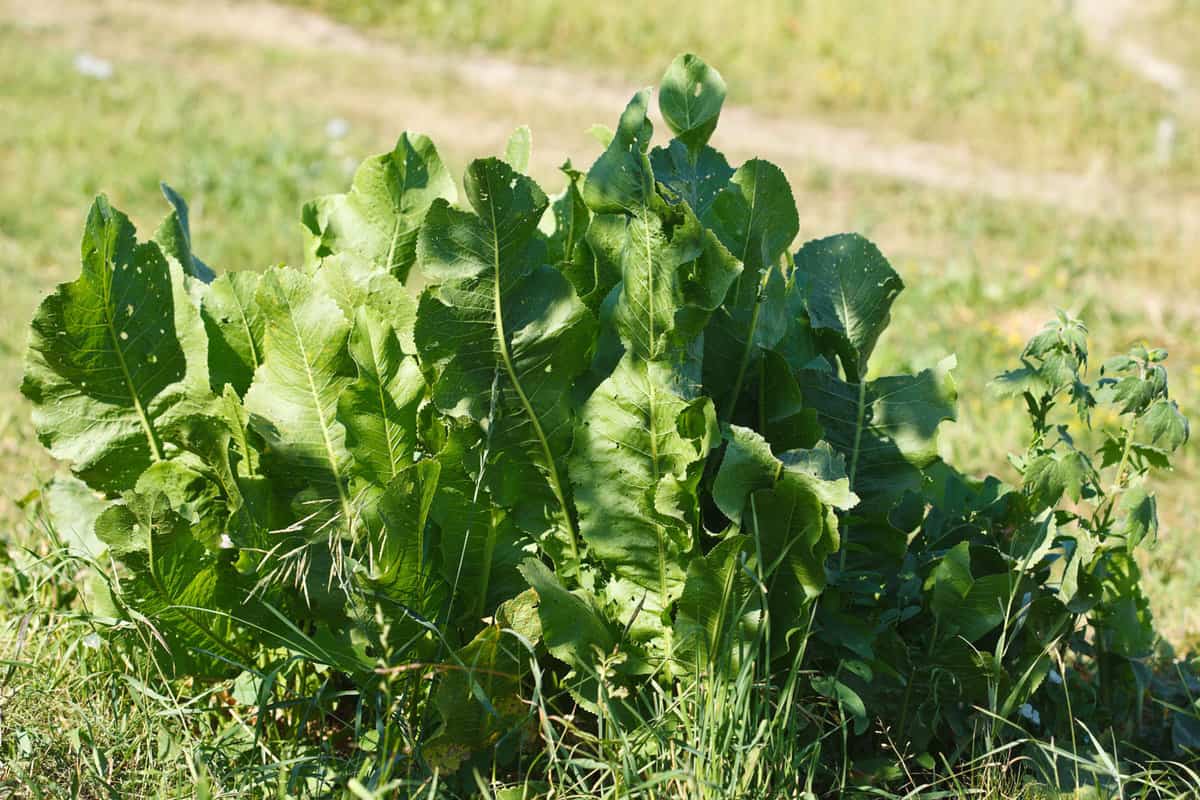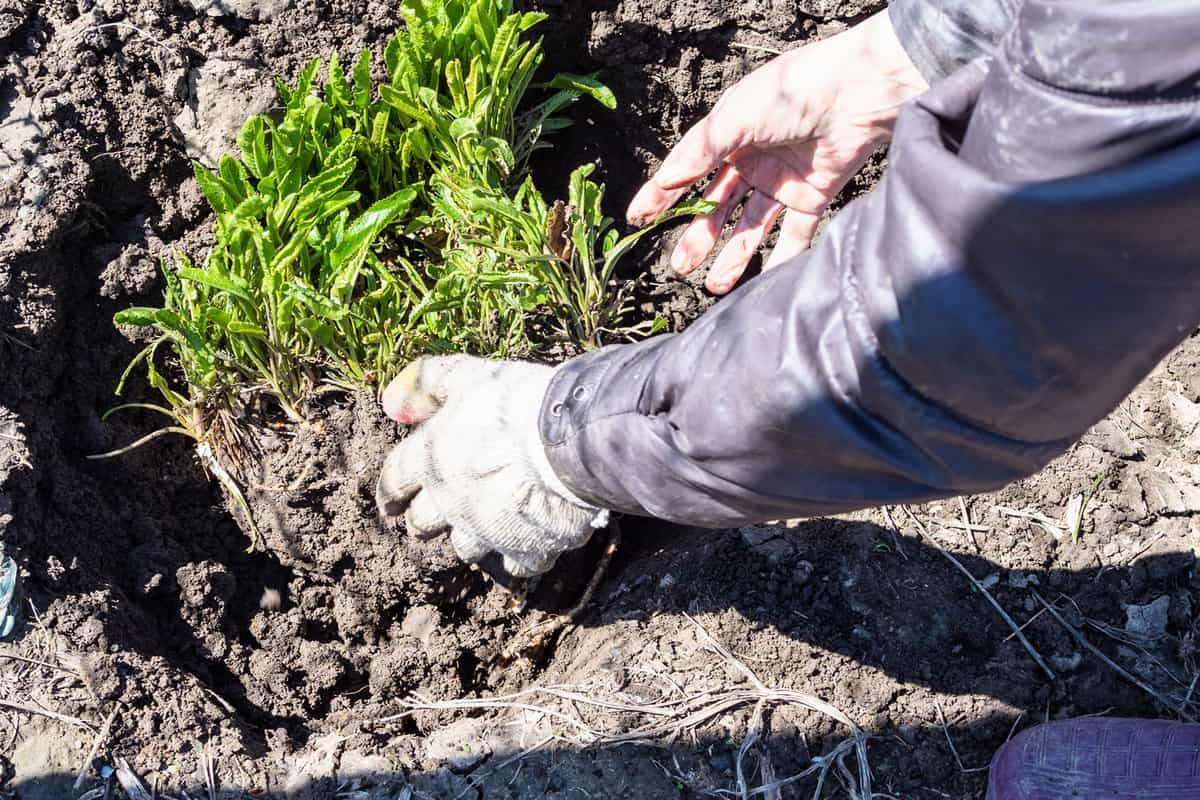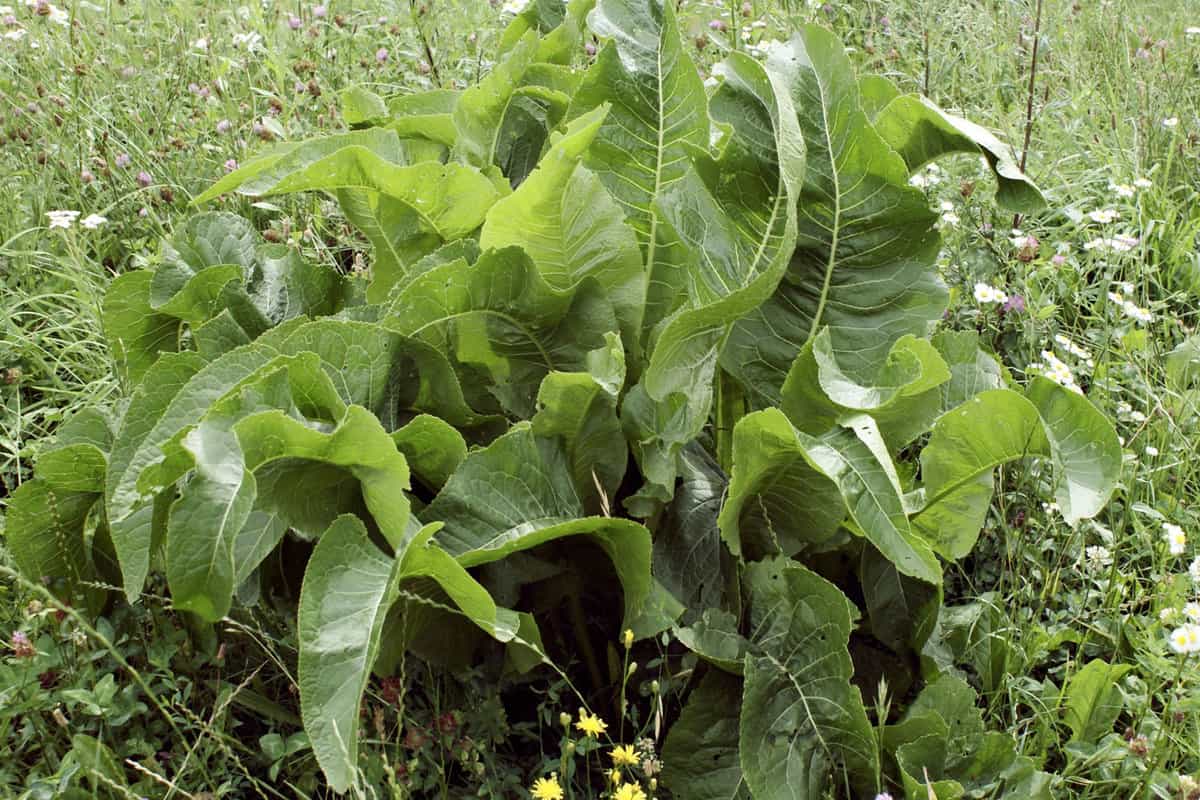Horseradish, known for its pungent, spicy taste, is a delightful addition to many home gardens.
But where should this intriguing root vegetable be planted for optimal growth? What particular soil conditions and preparations are required?
Along with understanding the plant's growing requirements, these questions are vital for anyone aiming to to cultivate a healthy horseradish.
Understanding Horseradish Plant
When cultivating horseradish, there are several factors to consider that contribute to the growth and success of this unique plant. Here's an overview:
Climate and Hardiness Zone
Horseradish thrives best in Hardiness Zones 2-9, preferring a temperate climate. The plant can tolerate different weather conditions, making it adaptable and robust in any home garden.

Horseradish thrives in cool temperatures, ideally between 60-65°F, and benefits from a fairly cold fall, which aids in the development of the root size and flavors.
Throughout the growing season, remove any bottom leaves that turn brown, as this promotes overall plant health.
You might also like: 12 Most Vibrant Fall Color Plants for Zone 7
Growth Structure
Horseradish is a perennial plant known for its strong-smelling roots and large leaves.

The plant can grow up to 2 feet in height. The roots, which are the main interest to gardeners, are carrot-like in shape, usually rough, and white to cream-colored.
Seasonal Changes
Horseradish is planted using root cuttings or "sets" in early spring, as soon as the soil is workable.

Throughout the growing season, the plant focuses on leaf growth and develops a robust root system.
In fall, the leaves start to die back, and the plant's energy goes into storing nutrients in the roots. This is the time when the roots are harvested for their potent flavor.
Optimal Conditions
For a successful horseradish plant, it is essential to grow it in well-drained soil with high organic matter and fertility.
Incorporate a complete garden fertilizer or a large amount of well-decayed manure into the soil before planting.

Horseradish prefers full sun, but it can tolerate some shade.
Ensure weeds are controlled, as they compete with the horseradish plant for water and nutrients.
Lastly, be cautious when tilling soil that contains horseradish roots, as any small root piece might sprout and spread the plant in undesired areas.
Be sure to read: When Is It Too Late To Use Weed And Feed?
Where to Plant Horseradish
When planning to grow horseradish in your garden, consider factors such as sunlight, soil, and space.

This section will help you find the ideal spot for planting horseradish.
Sunlight Requirements
Horseradish thrives best in full sun to partial shade. It's crucial to place your horseradish plants in a location where they receive at least 6 hours of sunlight each day.

Providing ample sunlight promotes healthy growth and better root development.
Soil Preferences
The ideal soil for horseradish growth should be well-drained, loamy, and rich in organic matter.
Before planting, spade or rototill the soil to a depth of 8 to 10 inches and mix in generous amounts of well-decayed compost or other organic material.
The soil pH should be between 6.0 and 7.5 for optimum growth. If needed, perform a soil test and adjust the pH through lime or sulfur applications.
Here are some steps to prepare your soil for horseradish planting:
- Loosen the soil to a depth of 8-10 inches.
- Add compost or well-decayed manure to enrich the soil.
- Incorporate a complete garden fertilizer (10-10-10) at a rate of one pound per 100 square feet.
- Check and adjust the soil pH if necessary.
Space Considerations
Proper spacing is crucial for horseradish plants to have sufficient room for root growth.
Plant horseradish root pieces 2-3 inches deep and one foot apart. This allows ample space for the roots to expand as they grow.

To prevent horseradish from spreading uncontrollably, some gardeners plant the roots in buried pots or 12-inch wide and 24-inch long PVC plastic pipes.
This technique helps keep the horseradish contained and makes harvesting easier.
Common Mistakes When Planting Horseradish
Horseradish is a popular spicy root vegetable that people grow in their gardens. However, there can be some common mistakes made while planting them, causing issues with growth and yield.

In this section, we'll discuss three of these mistakes: incorrect planting depth, ignoring pH levels, and lack of watering.
Incorrect Planting Depth
One mistake gardeners often make is planting horseradish root pieces at the wrong depth.
Plant these root pieces 2-3 inches deep. Planting them too shallow or too deep can cause the roots to be exposed or struggle to receive adequate nutrients from the soil.
To avoid this issue, measure the depth before planting and adjust as needed.
Ignoring pH Levels
Another mistake is neglecting the soil's pH levels. Horseradish can tolerate a wide range of soil pH, but it generally prefers slightly acidic to neutral soil.

Ignoring pH levels can lead to poor growth or nutrient deficiencies. To ensure your horseradish thrives, test the soil's pH and amend it as necessary.
Common amendments for adjusting pH include lime to raise it or sulfur to lower it.
Lack of Watering
Lastly, horseradish requires consistent watering to grow well. An insufficient water supply can cause slow growth and even wilting.
So, it's important to develop a regular watering schedule for your garden. Be careful not to overwater, as this can lead to root rot and other issues. Keep in mind that the soil should be moist but not overly saturated.
You might also like: The Plant Parenting Secret: Why Scheduling Watering Is a No-No!
In Closing
When choosing the ideal spot to plant horseradish, it is important to consider a few key factors.
First, find a location with well-draining soil, as horseradish roots grow best in a loose, rich environment.
Amend the soil with generous amounts of well-decayed compost or other organic material before planting to ensure optimal growth and flavor.
Another consideration is sunlight. Horseradish prefers full sun, so select a spot in your garden that receives at least six hours of direct sunlight per day.
This will promote strong root development and more vigorous growth.
